The largest contract in Everest5’s history – We have started designing the Warsaw Ghetto Museum
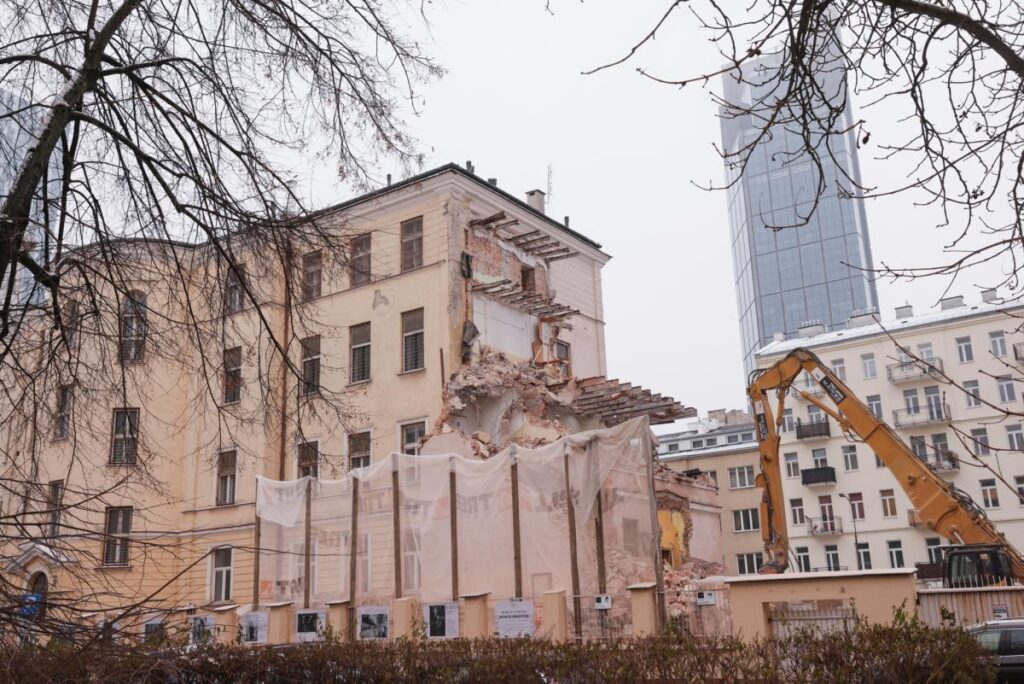
We are proud to announce that we have begun work on the largest contract in our company’s history – the design and execution of works related to electrical and telecommunications installations at the Warsaw Ghetto Museum. This is not only a milestone in our company’s development but also a great honour to participate in such a prestigious and emotionally significant project, which aims to commemorate the tragic events of the Second World War and pay tribute to the victims of the Warsaw Ghetto. As part of this investment, our tasks include the execution of works related to electrical, telecommunication, and external installations. A key responsibility will be the design and implementation of the physical security information management (PSIM) and building management (BMS) systems for both permanent and temporary exhibitions. Our company will ensure proper power supply and security and will design the cable routes, conduits, and induction loops for the power and control systems of the exhibits. The Warsaw Ghetto Museum is an institution being established on the site of the former Warsaw Ghetto – a place of martyrdom and heroism, but also of human tragedy. It was here in 1943 that one of the most famous uprisings of the Second World War – the Warsaw Ghetto Uprising – took place. Through the Warsaw Ghetto Museum, the memory of these events and of the people who lived through them will be passed on to future generations in a modern and educational way. The project we are undertaking combines history with modern technological solutions, allowing for the creation of a space that fosters deep reflection on the past, while also enabling interaction with contemporary media and technologies.
Autonomous Railway Stations – PKP S.A.

PKP S.A. manages over 2,500 railway stations, of which nearly 600 handle passenger traffic. Several years ago, a modernisation programme was launched. Its effects are already visible – many station buildings have been thoroughly renovated and refurbished. Everest5 is playing an active role in this project. Our portfolio now includes over 40 facilities equipped with advanced IT systems. An interesting proprietary solution of ours is the Keyless Railway Station Locking System (BSZD). The system ensures the station’s closing / opening procedure is automatically executed according to the scheduled hours. Thanks to this solution, doors are automatically locked and unlocked at designated times, while ensuring the possibility for individuals who may be locked inside to exit, and for authorised persons to enter. Security is also ensured through the use of cameras. Security personnel can monitor whether alarm events registered in the system require their intervention. The Keyless Railway Station Locking System integrates the access control system, alarm system, CCTV system, and the station’s public address system, where announcements about door closures are made automatically. This solution results in significant cost savings while maintaining the highest safety standards.
The future of BMS lies in integration with IoT, artificial intelligence and machine learning!
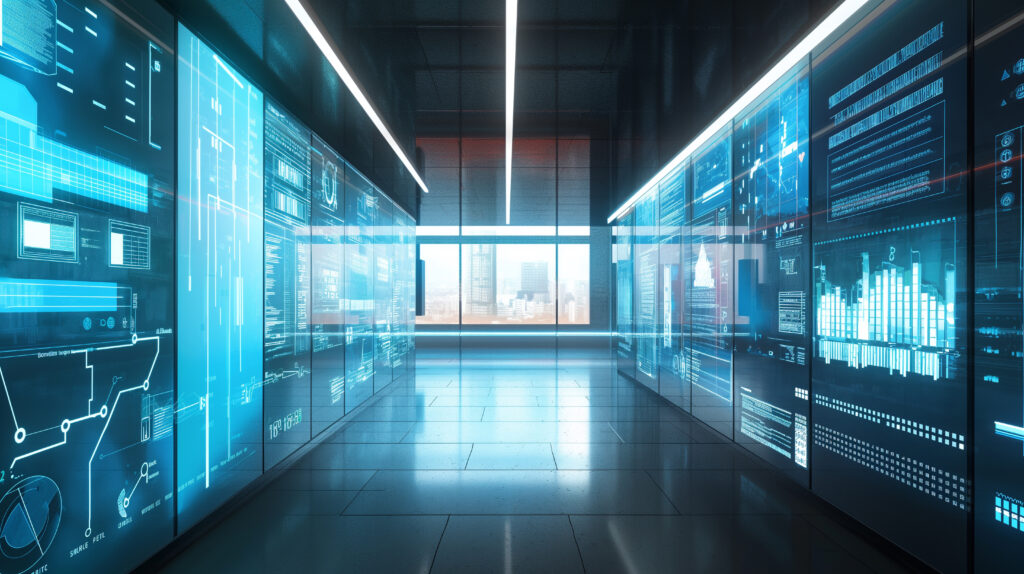
The BMS Project 2024 conference, held on 26–27 November 2024 at Fabryka Wełny in Pabianice, was an excellent opportunity to explore the latest technological innovations in Smart Building, HVAC, and building automation. Naturally, we couldn’t miss it! Insightful presentations, complemented by discussions during networking sessions, confirmed our belief that the future of BMS systems is closely linked with the development of artificial intelligence, machine learning, and blockchain technology. Modern building management system (BMS) solutions will not only respond to current conditions but will also anticipate the future needs of the building and its users. Integration with the Smart City concept will make it possible to optimise resource consumption on the scale of entire building complexes, districts, or even entire cities. Contemporary building management systems (BMS) integrate with IoT (Internet of Things) platforms. This means they can communicate with various smart devices within the building – from air quality sensors to smart light bulbs. This integration opens up new possibilities for personalisation and optimisation of both work and living environments. We support our Clients in achieving full integration of all building systems, particularly those directly responsible for the consumption of electrical energy, heat, and utilities. This is an essential requirement for complete control over the energy efficiency of any facility.
Acceptance protocol for the Mausoleum of the Martyrdom of Polish Villages
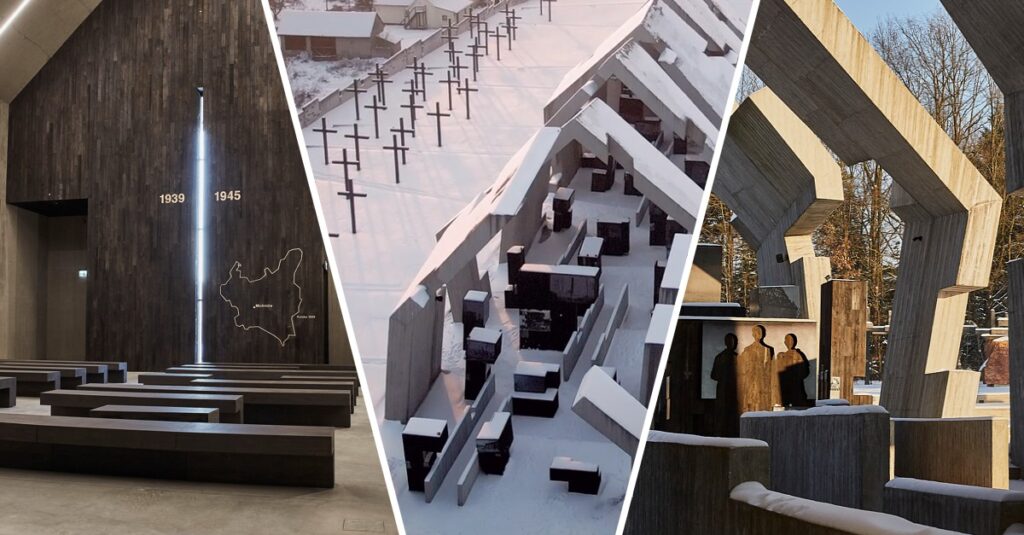
An extraordinary exhibition is completed. The acceptance protocol for the Mausoleum of the Martyrdom of Polish Villages has been signed. From a dull storeroom for artefacts, where visitors are required to wear slippers so as not to scratch the parquet floors and a group of guards ensures no one gets too close to an exhibit, to a modern facility drawing heavily on the most advanced exhibition solutions and full of user-friendly multimedia. The real investment boom that began over a decade ago has radically transformed Polish museology. Both in terms of its concept – what a museum is and how it should operate – and in its architecture and technological solutions. Today, it is difficult to imagine the cultural offerings of Polish cities – or even their cityscapes – without the new museum institutions, many of which have already become architectural icons, such as Warsaw’s POLIN or the Museum of the Second World War in Gdańsk. And because these buildings usually feature unconventional forms and surprising interior arrangements, designing the exhibition and all the related installations becomes a considerable challenge. All the more so when the architect’s creation is particularly unusual. ‘One of Everest’s tasks as the developer of the detailed design was to create the entire museum narrative, including the conceptual storyline, a multimedia-rich exhibition, as well as music composition and audio production’. A perfect example of this is the newly completed Mausoleum of the Martyrdom of Polish Villages in Michniów, carried out by Everest5 Sp. z o.o. For this project, the company was responsible for more than just all types of electrical, audio-video, and exhibition control installations. One of Everest’s tasks as the developer of the detailed design was to create the entire museum narrative, including the conceptual storyline, a multimedia-rich exhibition, as well as music composition and audio production. Most importantly, Everest ensured the seamless coordination of all contributors’ work to create a place that provides an intense emotional experience for visitors, while being highly functional as a cultural institution. ‘Most of the touchscreens are embedded in irregularly shaped blocks of varying sizes, harmonising with the building’s architecture’. Michniów is a small village located near Kielce. During the German occupation, it was completely razed to the ground and its inhabitants were almost entirely exterminated. Reflecting this fact through the building’s symbolism, its creators chose a raw, monumental form. The massive concrete structure represents successive stages of a home’s destruction. As visitors move through each part of the exhibition, they witness a process of degradation unfolding before their eyes. The building’s structural elements become increasingly sparse – as one passes through the various stages, walls and roofs gradually disappear – until the final ‘remnants’ of the exhibition are displayed in a completely open space. Most of the touchscreens are embedded in irregularly shaped blocks of varying sizes, harmonising with the building’s architecture. ‘The task of selecting devices suitable for the nature of the exhibition required considering all parameters that ensure the multimedia’s stability under variable weather conditions’. The task of selecting devices suitable for the nature of the exhibition required considering all parameters that ensure the multimedia’s stability under variable weather conditions. Factors such as temperature and humidity cannot affect the longevity or operation of the equipment, and the location of the facility – in forested terrain in the heart of the Świętokrzyskie Mountains (Holy Cross Mountains) – necessitated the use of highly sealed monitors to ensure reliability, even amid the frequent rain and snow typical of the region. Although the exhibition is ready and awaiting visitors, the official opening of the new Mausoleum of the Martyrdom of Polish Villages headquarters had to be postponed until the easing of restrictions related to combating COVID-19. The spectacular display in Michniów is the first in a series of large-scale projects carried out by Everest5 for museum purposes, alongside the National Museum in Lublin and the Museum of Modern Art in Warsaw.
PKP S.A. focuses on unstaffed stations and remote management
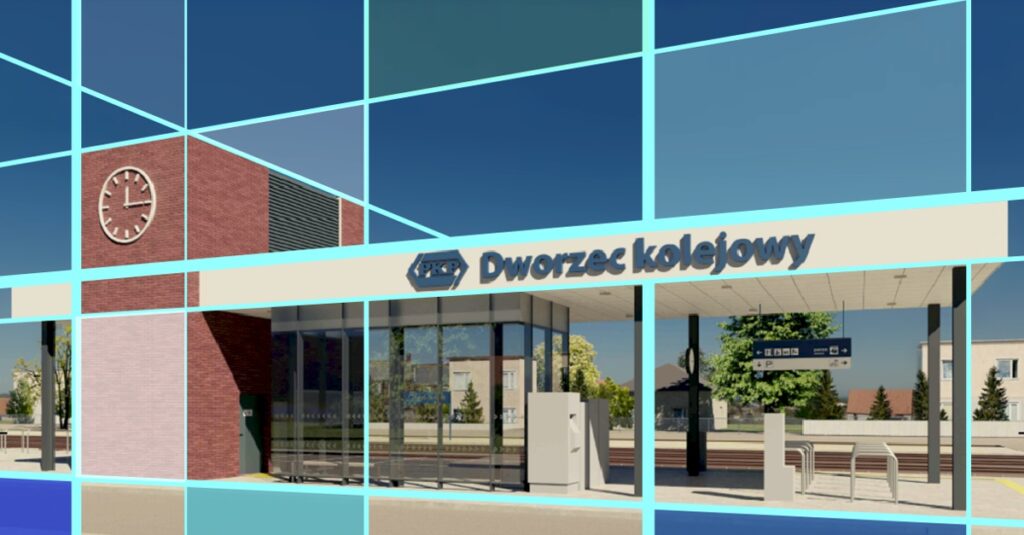
Everest5 will implement a keyless station locking system across 20 sites with an advanced analytical system. Among the hundreds of programmes implemented in Poland thanks to European Union funding, railway investments are certainly among those that most improve quality of life. Over the past decade, the media has widely reported on modernisation of rolling stock, upgrades to specific lines, and the redevelopment of railway stations in major cities (Warsaw, Kraków, Poznań, Katowice). The Italian Pendolino train at one time became a symbol of all these changes. Meanwhile, operating more quietly in the background – yet no less important – is the Railway Station Investment Programme, scheduled for the years 2016–2023. By the end of the programme, investor PKP S.A. will have spent around PLN 1.6 billion on the construction or modernisation of a total of 189 facilities. ‘At as many as 20 of these, Everest5 is delivering systems for remote station management’. ‘Our scope of work comprises electrical and low-voltage installations, including the Intrusion and Hold-up Alarm System, Access Control System, CCTV System, and structured cabling, together with active devices for all systems and communication’, says Daniel Miłosz, Vice President of Everest5’s Management Board. ‘We take a holistic approach to the building’, he adds. ‘The systems provide passengers with safety, comfort, and information, while also offering the investor’s services with tools for remote building management – both for day-to-day operation and long-term maintenance of the facility’. The guiding idea behind the design of new stations is unstaffed operation. Stations outside major cities, with few trains stopping each day, cannot afford to employ enough staff to ensure the safety, cleanliness, and supervision of all equipment on their premises. Therefore, it is essential to apply modern systems that allow station operation to be as automated as possible. In addition to the keyless building locking system, building automation, and PSIM (Physical Security Information Management), Everest5 is also introducing VMS – an advanced analytical tool. ‘Everest5 is also introducing VMS – an advanced analytical tool’. ‘VMS stands for Video Management System’, clarifies Daniel Miłosz. ‘The purpose of video analytics at the station is to support the work of operators overseeing safety. Depending on the location, we monitor for abandoned luggage and crossings of virtual boundaries (during nighttime hours when the station is closed). Video analytics also supports the station locking system – we use it to check whether anyone is still in the waiting area’. The new stations of the future are being modernised before our eyes, cutting ties with the period of deepest decline in Polish rail in the 1990s. These are modern facilities, confidently utilising contemporary technical solutions, becoming both functional and safe. Their distribution across the country significantly improves travel comfort for those outside major urban centres.
The National Museum is open! Everest5 delivers construction works and a modern exhibition at Lublin Castle
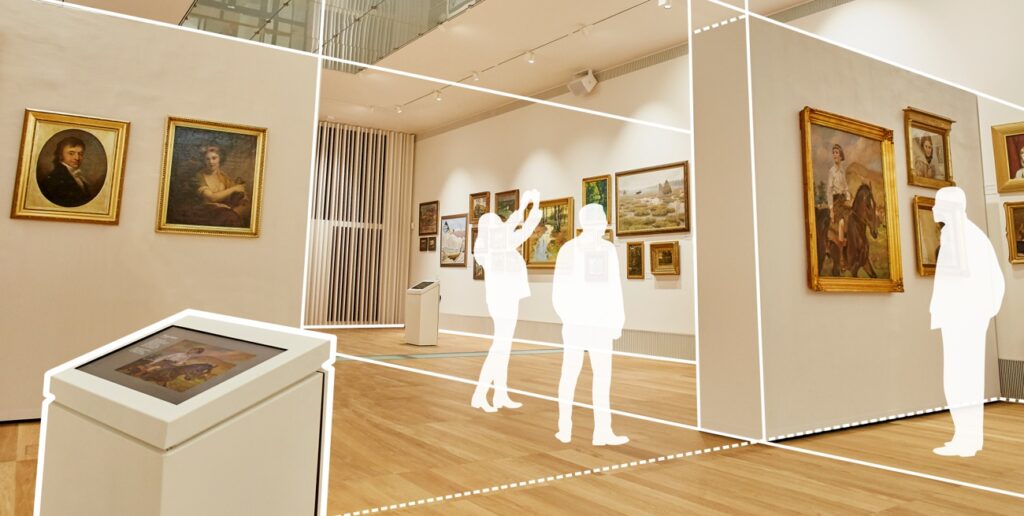
The largest city in eastern Poland can now boast a state-level cultural institution. The National Museum in Lublin – known as the Lublin Museum until 2020 – opened its doors to visitors following an official inauguration attended by the Minister of Culture. The museum is housed in the Royal Castle in Lublin, one of the city’s most iconic landmarks, with a history dating back to the 12th century. It has served as the museum’s premises since 1957. Interestingly, from the November Uprising until the Stalinist era, the castle functioned as a prison. Today, guards are now responsible solely for ensuring that visits comply with health protocols and, of course, for safeguarding the priceless works of art. And there is much to protect – the Lublin Museum’s collection now comprises approximately 157,000 objects. Delivering the new exhibition was a large-scale undertaking with a high degree of complexity. All works within a heritage-listed site of this calibre must meet the highest quality standards, and the final result must strike a careful balance between conservation requirements and the functionality of a modern exhibition, which makes extensive use of contemporary technological solutions and multimedia storytelling. Any visible alteration to the building’s exterior or drastic changes to its interior décor – which could disrupt its original composition – are out of the question. At the same time, the displayed art must be presented within a thoroughly modern exhibition context, which has evolved significantly in recent years. This presents an entirely different challenge compared to constructing an exhibition from scratch in a purpose-built, contemporary structure. ‘The final result of Everest5’s work is a 2,240-square-metre exhibition space featuring nearly 360 historic objects’. The final result of Everest5’s work is a 2,240-square-metre exhibition space featuring nearly 360 historic objects. The museum’s narrative has been expanded to include 30 interactive stations. Everest5 supplied all multimedia components – LCD monitors, display projectors, audio equipment – as well as traditional exhibition elements, including both mobile and fixed display cases, among which are no fewer than 60 large-format display units. The Warsaw-based company can thus lay claim to a comprehensive delivery of the exhibition – from construction works, through technical solutions, to installation and finishing works. The outcome of these efforts has already been appreciated by the many visitors who have seen the renewed exhibition at the National Museum in Lublin since its opening on 6 March. ‘This is another major museum project delivered by Everest5’. The works at Lublin Castle lasted two years, although, as the Museum’s Director, Dr Katarzyna Mieczkowska, notes, the full preparation period for this major investment spanned five years. The construction was funded with support from the European Union. This is another major museum project delivered by Everest5. The company will soon face further challenges of this kind, including work at the highly prestigious Museum of Modern Art in Warsaw.